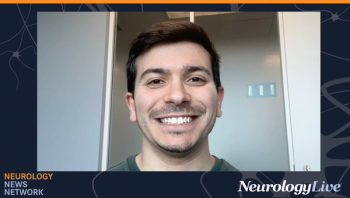
FDA Accepts NDA for Lemborexant for Treatment of Insomnia
A Prescription Drug User Fee Act action date has been set for Dec. 27, 2019.
Russell Rosenberg, PhD, D.ABSM
The FDA accepted for review the new drug application (NDA) for lemborexant, an investigational agent being studied for treatment of insomnia, announced Eisai Co. and Imbrium Therapeutics.
A Prescription Drug User Fee Act (PDUFA) date has been set for Dec. 27, 2019. The NDA submission is backed by data from a clinical development program that included 2 pivotal phase 3 studies that studied the safety and efficacy of lemborexant, SUNRISE 1 and SUNRISE 2, in addition to important safety studies like the assessment of postural stability after middle-of-the-night awakening and a next-morning driving study.
“Let me just say from a fairness perspective, there’s no perfect sleep-promoting agent, we know what the ideal sleep agent is, but I think we’re getting closer with lemborexant,” Russell Rosenberg, PhD, D.ABSM, Founder and CEO of NeuroTrials Research and former Chairman of the Board of the National Sleep Foundation and a principal investigator in the lemborexant studies, told NeurologyLive. “If clinicians have patients who either have trouble getting to sleep and/or staying asleep and they have safety concerns over previous uses of benzodiazepine receptor agonist, which are widely known, then this is something that they should seriously consider, and I think will be a valuable tool in their toolbox of treating insomnia and potentially other sleep disorders down the road. As I hope you can tell I’m excited about lemborexant and all the work that will come after once it’s approved.”
The first 6 months of the 12-month
“This was the second pivotal study that reported data; we already had a successful phase 2 proof-of-concept study that helped us select the doses to move forward to phase 3,” Margaret Moline, PhD, International Project Team Lead for the lemborexant clinical development program, told NeurologyLive in an interview. “We previously reported our results from SUNRISE 1 and showed that the objective measures of sleep onset and sleep maintenance were statistically significant compared to placebo. Included in that study were the sleep diary endpoints, the same that we used in this study. Because of the good efficacy that we've seen in the other study, we were expecting to see good efficacy in this study.”
The most commonly reported adverse effects were mild to moderate; the most commonly reported adverse effects greater than 5% in either treatment arm greater than placebo were somnolence, headache, and influenza. Serious adverse effects were reported in 2.2% of the lemborexant 5 mg arm, 2.9% of the lemborexant 10 mg arm, and 1.6% in placebo, and only 1 was considered treatment-related.
The full data from the 12-month SUNRISE 2 trial will be presented at upcoming medical meetings this year.
SUNRISE 1 was a 1-month, placebo-controlled, double-blind study that included the first phase 3 head-head comparison versus zolpidem tartrate extended release, an active comparator, that evaluated the safety and efficacy of lemborexant in 1006 participants 55 years of age and older with insomnia.
The main objective was the assessment of sleep latency, while key secondary objectives included sleep efficiency and wake after sleep onset, objectively using polysomnography; both primary and secondary objectives were met. The most common adverse effects reported in the lemborexant arms were headache and somnolence.
Lemborexant is also under investigation in a phase 2 trial for treatment of irregular sleep-wake rhythm disorder and mild to moderate Alzheimer disease dementia.
REFERENCE
Eisai and Imbrium Therapeutics Announce U.S. FDA Filing Acceptance of New Drug Application for Lemborexant for the Treatment of Insomnia [news release]. Tokyo and Stamford, Conn.: Eisai Co., Ltd.; March 11, 2019.
Newsletter
Keep your finger on the pulse of neurology—subscribe to NeurologyLive for expert interviews, new data, and breakthrough treatment updates.



























